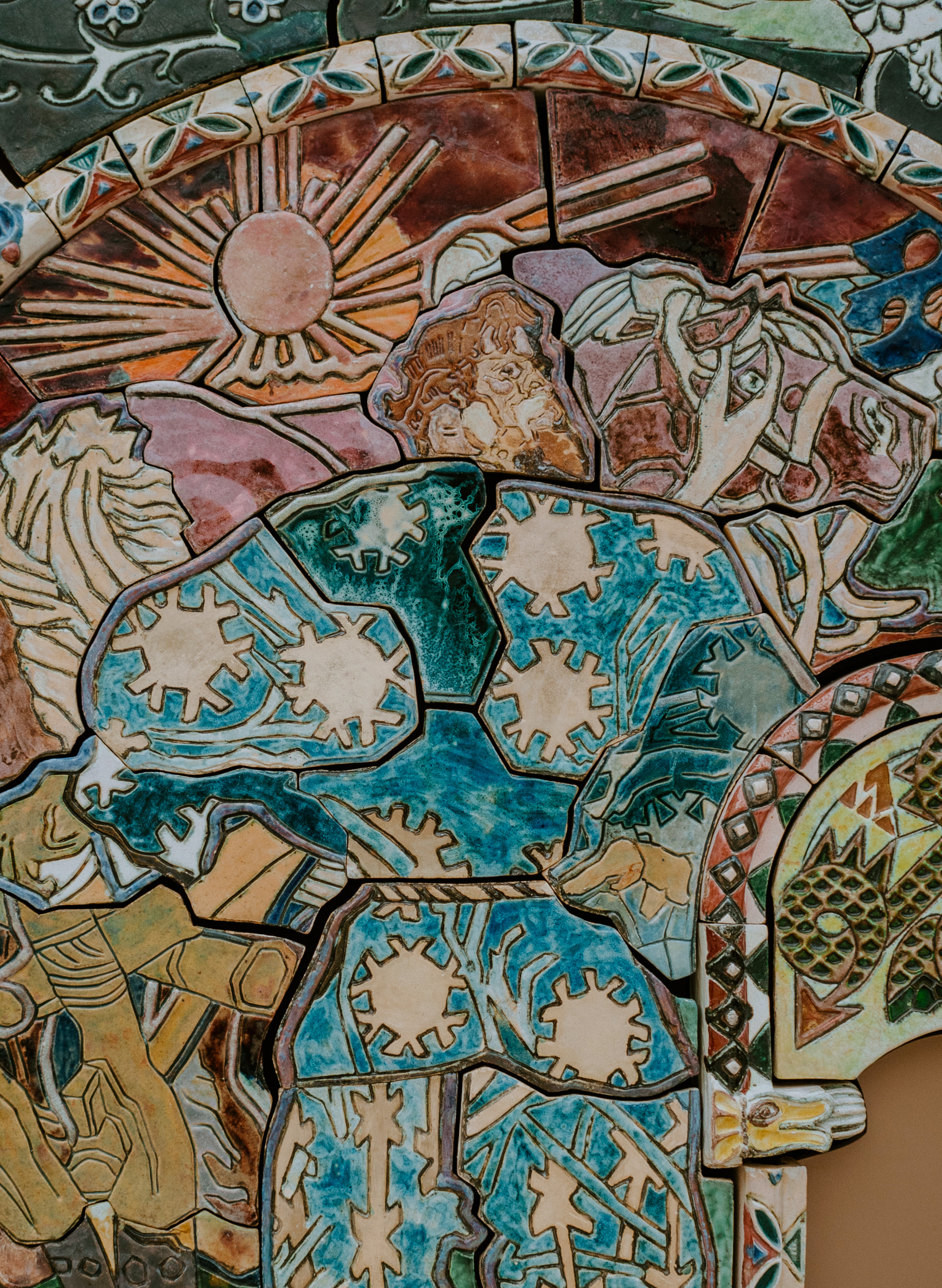Exhibitions
0+Moscow glazed tile
Kolomenskoe
25 January 2022 – 15 May 2022
Ground floor of the Palace of Tsar Alexey Mikhailovich. Prospekt Andropova, 39, building 69
The best examples of architectural ceramics from the Kolomenskoe Museum-Reserve collection.
The exhibition ‘Moscow Glazed Tile’ introduces the milestone stages of the development of glazed tile art in Russia. The exhibition includes sections devoted to the design and structure, technique and themes of architectural ceramics painting. The central exhibit was the fireplace ‘Mikula Selyaninovich and Vol’ga’ by Mikhail Vrubel from the collection of the museum-reserve. It is no coincidence that the Palace of Tsar Alexey Mikhailovich was chosen as the venue of the exhibition – reconstructed tiled stoves of the XVII century installed in ten chambers of the palace are one of the dominant objects in these interiors.
The unique collection of glazed tiles at Kolomenskoe counts about 16 thousand items, making it possible to trace the history of the development of architectural ceramics from its origins, the plates XV century, to the products of the Soviet period.
Moscow glazed tile is a ceramic tile used for facing furnaces and buildings. It is acknowledged that the development and formation of tile production nationwide was determined precisely by the Moscow tile. For example, in the XVII century, the geography of its distribution almost coincided with the map of the Russian state of that time. The reasons for it lie in the organizational and financial capabilities of Moscow, where the largest ceramic workshops were mainly located, in their more open access to European production techniques, as well as in knowledge of European tastes and in the formation of ‘fashion’ in the design of secular and church life. Therefore, although the tiles were generally in great demand by the province, they remained to be a phenomenon of Moscow culture.
The most extensive section of the exhibition ‘Moscow tile’ is dedicated to ceramic products of the XVII century. This period is rightfully considered the golden era of Russian tile. At that time, bright, multicolored architectural ceramics decorated churches and bell towers, as well as stoves, which were an important part of the interior of Russian houses. Among other things, the exhibition displays glazed tiles used in the decoration of the non-extant churches of St. Nicholas the Wonderworker and St. Nicholas the Wonderworker at the Stolpy in Moscow, as well as a ceramic panel depicting John the Evangelist, made by the master Stepan Ivanov (Half-Devil) for the Cathedral of the Holy Fathers of the Seven Ecumenical Council, located on the territory of the St. Daniel Monastery in Moscow.
The XVIII century is represented by stove painted tiles. In Russia, their production was established by order of Tsar Peter I. The plot paintings on the tiles of that time represent different aspects of the life of Russian society. The museum collection contains about a thousand similar tiles. When looking at them, you can imagine what such ‘stove-books’ looked like. You could read them by ‘flipping through’ one row (‘page’) of tiles after another.
The XIX century is the time of the birth and the golden era of factory production. Tiled stoves became no longer rare not only for urban houses, but also for the houses of wealthy peasants. At the exhibition, you can see a ceramic panel with floral motifs, made at the M.S. Kuznetsov partnership factories.
At the end of the XIX – beginning of the XX century, the best Russian artists-painters turned to the "art of clay", who created products in this material that combine new techniques with the traditions of the past. Mikhail Vrubel was one of the first easel artists (member of the Association of Easel Artists formed in the 1920s by Russian artists) who seriously engaged in ceramics. A majolica fireplace ‘Mikula Selyaninovich and Vol’ga’, created by the artist in 1898, was the central exhibit of the exhibition. A spectacular example of the art nouveau design consists of more than 150 tiles of various shapes. It was made in the ‘Abramtsevo’ pottery workshop, which was located on Nizhnaya Maslovka Street in Moscow. During the property nationalization of the Moscow lawyer Ivan Alyabyev (1874-1955) the fireplace was admitted to the National Museum Foundation. Later it was transferred to the Museum of Ceramics, and then to the collection of Kolomenskoe Museum-Reserve.
The Soviet period is represented in the exhibition by the works of sculptor and ceramist David Tsipirovich (1885-1945). He made an important contribution to the development of architectural and artistic ceramics and promoted the majolica painting revival. He also designed ceramic architectural details for the Moscow Metro. The exhibition features his glazed tiles with portraits of Vladimir Lenin, Joseph Stalin, Maxim Gorky and Leo Tolstoy of the 1920s and 30s.